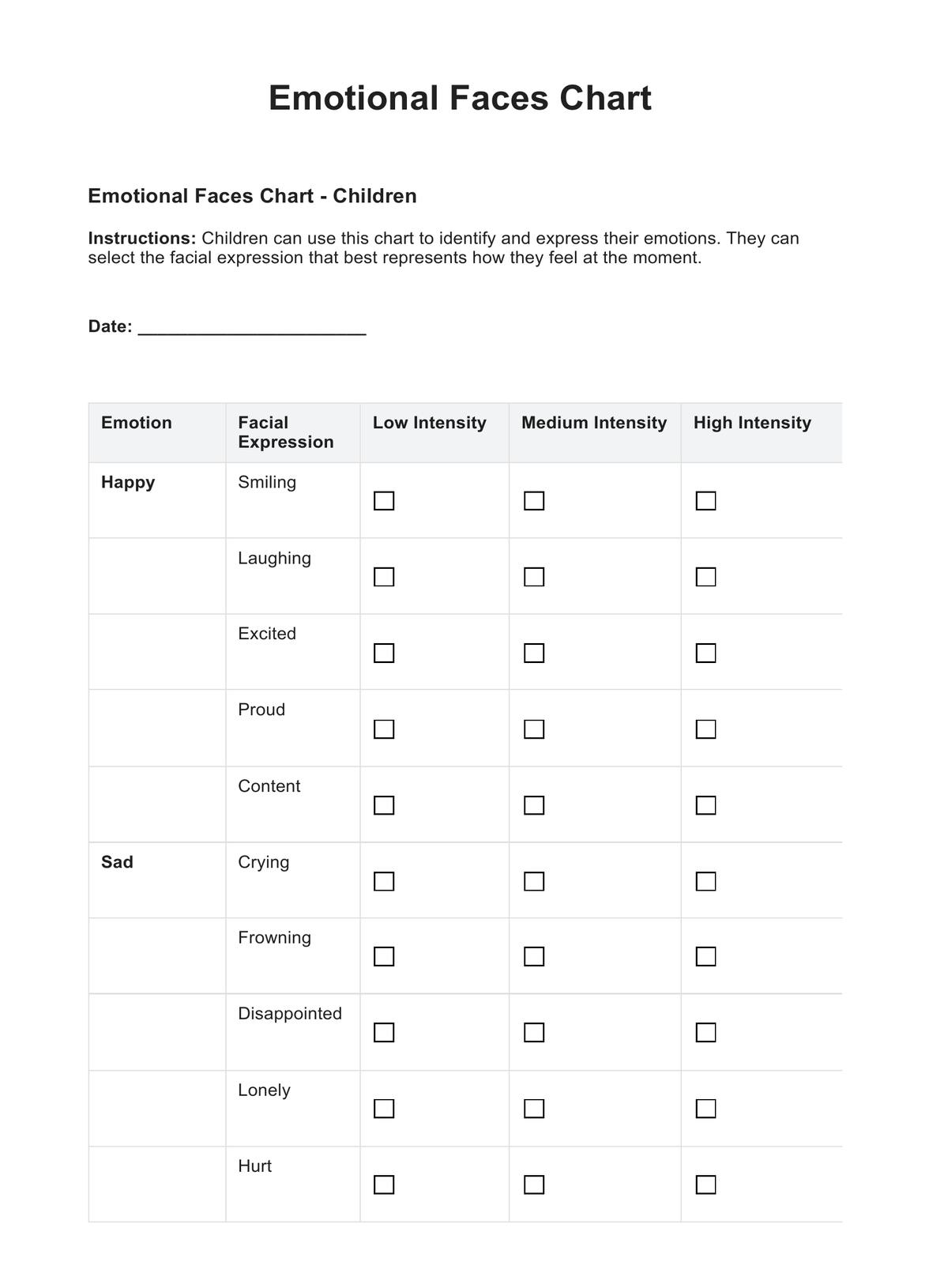The Emotional Faces Chart is used by individuals, therapists, educators, parents, and mental health professionals to understand, express, and communicate emotions effectively.

Emotional Faces Chart
Explore Emotional Faces Charts to enhance emotional awareness and communication. Use these charts to identify emotions effectively for a more in-depth understanding of how we express feelings.
Emotional Faces Chart Template
Commonly asked questions
The Emotional Faces Chart is used in various situations, including therapy sessions, educational settings, crisis interventions, anger management workshops, and emotional intelligence training.
Users identify and express their emotions by selecting or pointing to facial expressions on the chart. It serves as a communication aid, enhances emotional awareness, and promotes empathy and emotional intelligence.
EHR and practice management software
Get started for free
*No credit card required
Free
$0/usd
Unlimited clients
Telehealth
1GB of storage
Client portal text
Automated billing and online payments











